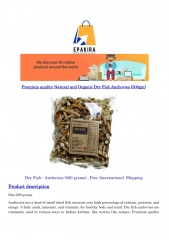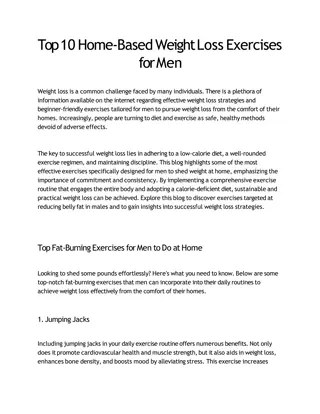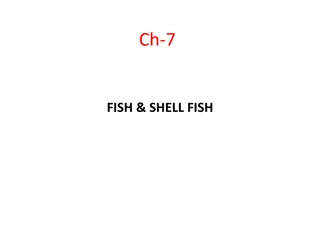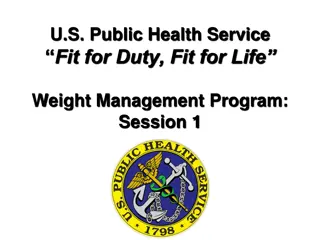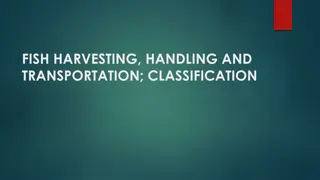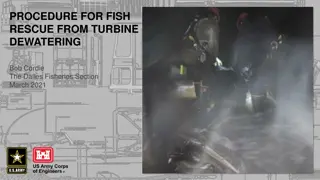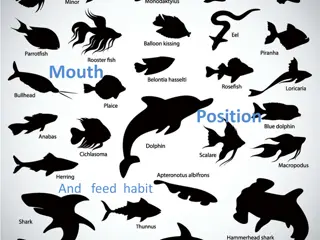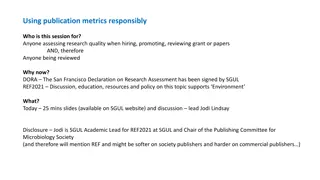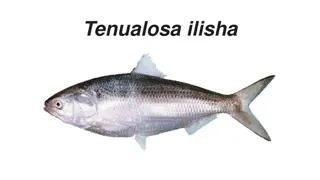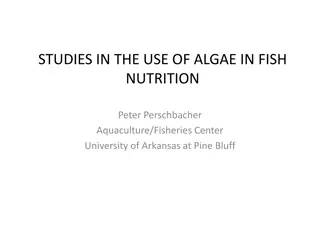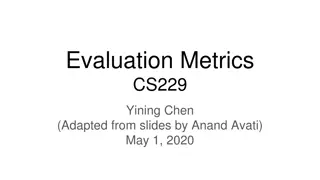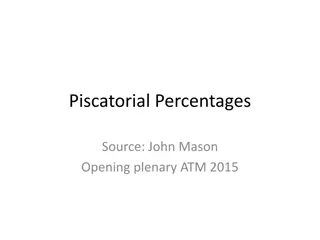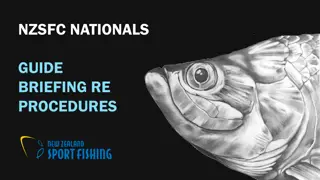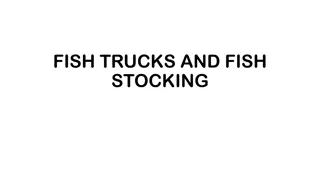Understanding Fish Condition Metrics and Length-Weight Relationships
Fish condition metrics and length-weight relationships play a crucial role in assessing the health and growth of fish populations. These metrics help determine factors such as weight relative to length and overall physical health. By utilizing models and examining relationships between length and weight, researchers can gain valuable insights into fish populations and their environmental conditions.
Download Presentation

Please find below an Image/Link to download the presentation.
The content on the website is provided AS IS for your information and personal use only. It may not be sold, licensed, or shared on other websites without obtaining consent from the author. Download presentation by click this link. If you encounter any issues during the download, it is possible that the publisher has removed the file from their server.
E N D
Presentation Transcript
Weight-Length and Condition Natural Mortality Recruitment Population Biomass Fishing Mortality Immigration Emigration Growth
Length-Weight Data Basis of most condition metrics. Common to weigh only a subsample of fish. Develop a length-weight relationship model. Nonlinear Heteroscedastic 6 5 4 W(lbs) Power function Multiplicative errors 3 2 1 b i 0 W =a L e i i 5 10 TL(inches) 15 20 Body Condition
Length-Weight Model If b=3 then fish growth is isometric i.e., all dimensions change similarly over time i.e., shape of fish does not change over time Body Condition
Length-Weight Model if b 3 then fish growth is allometric if b<3 then fish gets more fusiform with time if b>3 then fish gets more plump with time Body Condition
Length-Weight Model b i Examine natural log of W =a L e i i Linear Homoscedastic 2 1 0 log(W(lbs)) -1 -2 -3 -4 1.5 2.0 2.5 3.0 log(TL(inches)) Body Condition
Body Condition A measure of relative plumpness How much does the fish weigh relative to some standard weight based on its length A measure of physical health of . Individuals -- Energy densities, lipid content Stocks -- Favorable habitat conditions, ample prey supply Body Condition
Condition Metrics How much does the fish weigh relative to some standard weight based on its length? Differ in how standard weight is computed Cubic of observed length (L3) Fulton s condition factor (K) Predicted weight from observed length using length-weight relationship for studied stock LeCren s relative condition factor (Kn) Predicted 75th percentile of mean weights from many populations given observed length Relative weight (Wr) Body Condition
Standard Weights Predicted 75th percentile of mean weights from many populations given observed length Walleye Ws equation Ws= 4.0 3.5 log10(Weight (g)) . 3 180 00000352 . 0 L 3.0 2.5 2.0 1.5 1.0 2.2 2.4 2.6 2.8 3.0 Body Condition log10(Length (mm))
Relative Weights (Wr) Generally accepted method of computing body condition More accepted in N.A. than in Europe Computed with W Wr = * 100 Ws Body Condition
Wr Interpretation Thus, Wr=100 if fish is at 75th percentile of mean weights for many stocks If Wr < 100 then fish is less plump than an average fish of the same length from 75% of stocks. If the mean Wr < 100 then fish in stock are less plump, on average, then an average fish from 75% of stocks. i.e., less plump then an above average standard. i.e., should not be surprised to see values < 100 Body Condition
Wr Interpretation Wr has been developed to be unrelated to fish length. Thus, Wr is most useful for comparing body condition among Length classes Years Locations Habitats Management conditions/scenarios Body Condition
Wr Interpretation -- Example From Liao et al. 1995. Transactions of the American Fisheries Society 124:387-400. Body Condition
Wr Interpretation -- Example From Daugherty and Sutton. 2005. North American Journal of Fisheries Management 25:1191 1201. Body Condition
Wr Interpretation -- Example From Willis and Scalet. 1989. North American Journal of Fisheries Management 9:488-492. Body Condition


